Echoes of Ancient Lands
Goa India Beyond the Beaches
Mother Masala Tours
Where Portuguese Legacy Meets Indian Soul
Goa India Beyond the Beaches. Let's go to Goa, where the Arabian Sea whispers tales of cultural fusion. Named from the Konkani word "Goy," meaning a strip of fertile land, this smallest Indian state stretches along the western coast. Portuguese influence, beginning with Afonso de Albuquerque in 1510, created a sophisticated blend that persists in daily life. The region remained under Portuguese control until 1961, longer than any other part of India. Today, with 1.5 million residents, the state pulses with an energy distinctly its own - where morning fish markets hum beside balcãos (traditional Portuguese-style verandas), and the aroma of coconut curry mingles with fresh poee bread from wood-fired ovens.
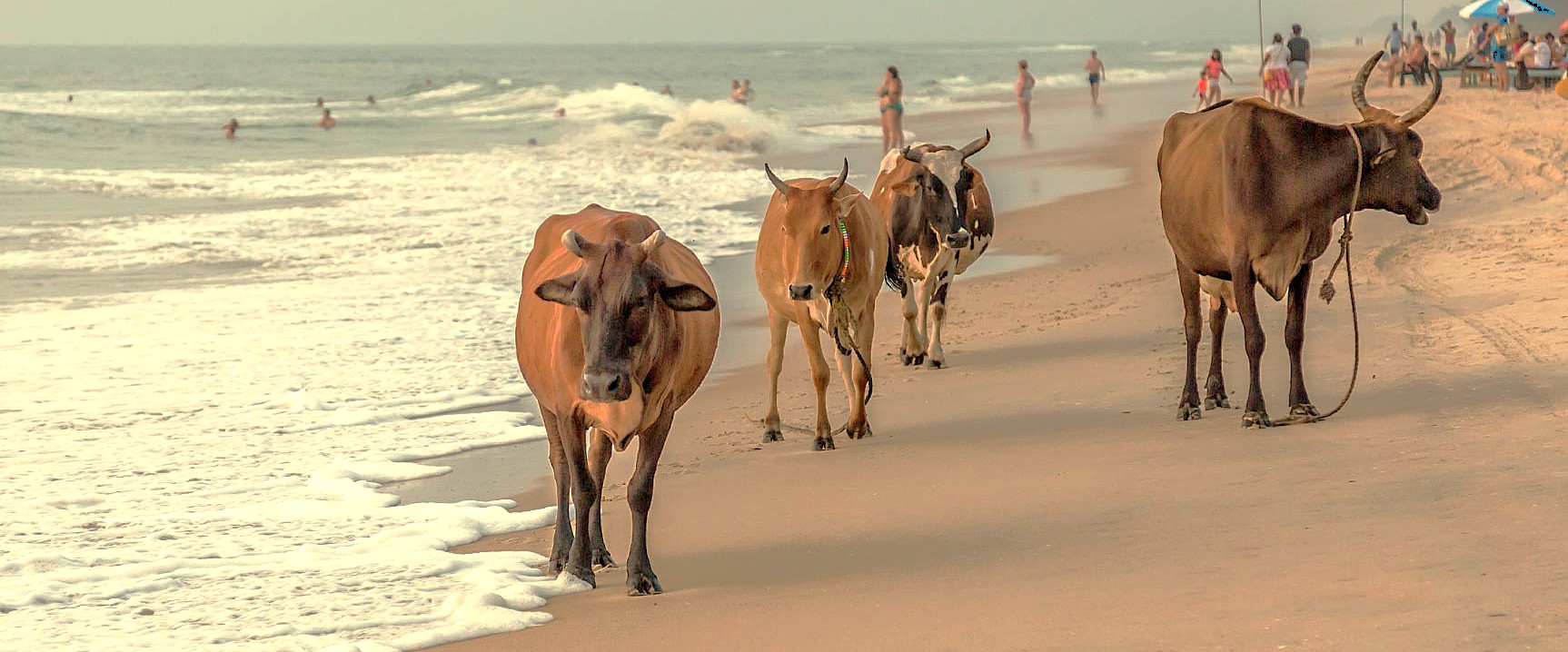
Goa India Beyond the Beaches: Sacred Spaces
Indo-Portuguese mansions, locally called "heritage homes," dot the landscape, each telling stories through their unique blend of European and Indian elements. The oldest surviving house dates to 1590 in Chandor, while others showcase centuries of refined living through ornate balconies, oyster shell windows, and interior courtyards. Traditional fishing canoes called 'ramponkar,' hand-crafted using techniques passed down generations, still grace the coastline. These living artifacts create an open-air museum of cultural fusion. The atmospheric spice plantations, some dating back to Portuguese times, preserve ancient cultivation methods and medicinal knowledge.
Ancient Mosaics: Impeccable Craftsmanship
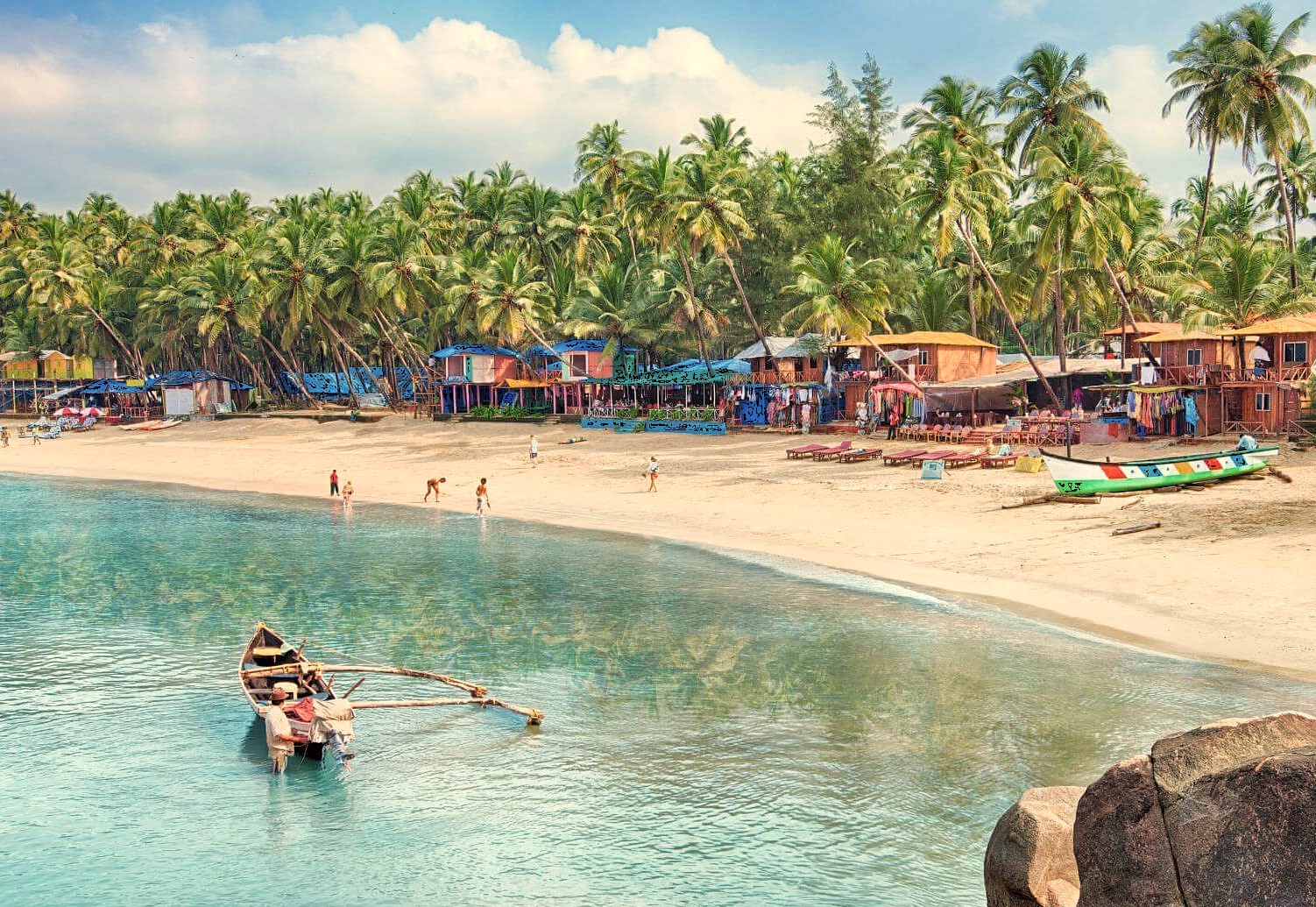
The influence of Portuguese and Indian craftsmanship is seen in many corners. Master artisans crafted the traditional Portuguese tiles, known as azulejos, that continue to decorate many of the old houses. Local workers also applied their skills, creating distinctive shell-inlay windows and carving detailed balustrades from wood. The homes in Fontainhas, which date back to the 1700s, reveal European design elements on their outer facades and iron balconies. Within these same structures, ceiling murals depicting classical scenes meet with Indian decorative patterns.
The Pulse of the Local Community
Goa India Beyond the Beaches. The warmth of hospitality in Goa reflects centuries of cultural mixing. Whether in beachside taverns or village markets, locals shift effortlessly between Konkani, Portuguese, and English, sharing stories over glasses of feni or plates of chorizo. Their laid-back approach to life - embracing afternoon siestas and evening music sessions - creates an atmosphere where time seems to slow down. This relaxed energy infuses every interaction, from morning fish markets to sunset gatherings at local cafes.
Capturing the Magic: A Photographic Haven
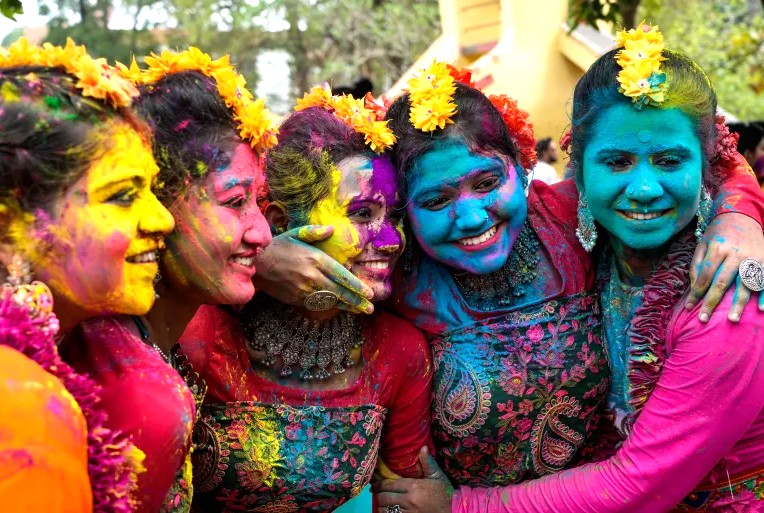
Our cameras capture the early morning activity of fishermen casting their nets at sunrise. The soft light reflects on the water’s surface and across the boats nearby. In the villages, traditional Portuguese-style houses are visible with their distinctive red-tiled roofs. Further inland, spice fields are dense with the aroma of cardamom, and neat lines of pepper vines climb their supports. The work of harvesting and later drying the spices is all done out in the open air. Late afternoon light creates a change across the landscape, signaling the end of the day.
A Culinary Journey: Savor the Flavour
Goan cuisine tells the story of cultural fusion through flavor. Vindaloo, derived from the Portuguese "vinha d'alhos" (wine and garlic), combines European preservation techniques with Indian spices. With dinner on the beach, fresh seafood transforms into sophisticated curries using coconut and kokum. Local bakeries produce Portuguese-influenced breads like poee and pao. Feni, distilled from cashew apples or coconut palm sap, offers a spirit unique to this region.
Resilience and Renewal: Overcoming Adversity's Challenges
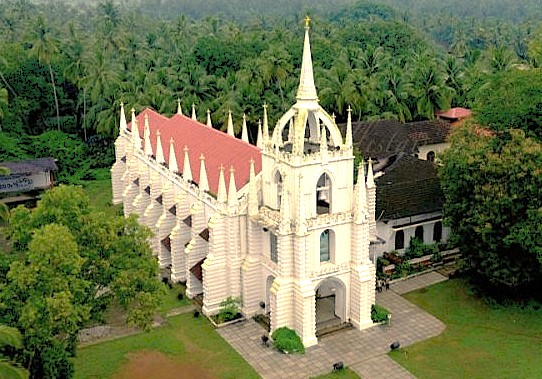
The region has navigated difficult periods, from devastating floods in 2000 to mining controversies in the 1990s. A complex transition from Portuguese to Indian rule took place in 1961. Through these times, communities rallied to maintain their culture. They have worked hard preserving traditional fishing methods and protecting ancient homes from being lost. This ongoing spirit of adaptation remains strong within local movements today. These groups continue their efforts to protect heritage structures and also their traditional livelihoods. This reveals a strong will to adapt to challenges while preserving cultural identity.
Urban Legends: Strange Sightings, Myths and Mysteries
Goa India Beyond the Beaches. Local stories speak of phantom ships that appear off the Goan coast during heavy storms, crewed by Portuguese sailors from centuries ago. There are also tales about buried treasures hidden during the region's active trading days, still waiting to be discovered. Many old family homes are said to be watched over by ancestral spirits who act as their guardians. These narratives contribute to the area's distinct character and are passed down through generations. People also share accounts of miraculous healings at certain sacred springs found deep in the countryside.
Serendipitous Meetings: Beyond the Main Path
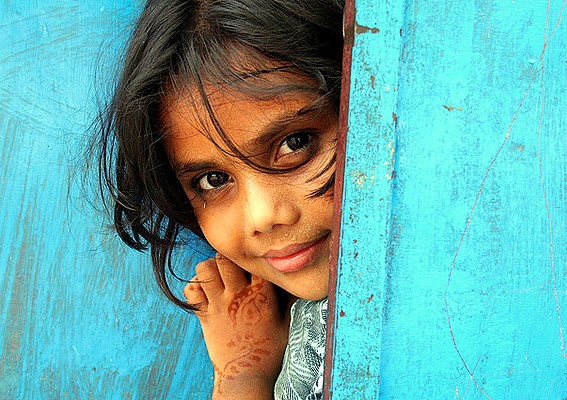
Walking through the villages in Goa, we find traditional work alive and well. Toddy tappers move up palms to collect sap. Potters use clay to make old-style ovens by hand. Families print textiles with designs that have been passed down for a long time. These activities take place in open workshops or under simple tin roofs. In some old houses, a fado session might be heard, with singing and guitars. Along the shore, fishermen sit and mend their nets, talking about the sea. The days are filled with the steady rhythm of work. The quiet sounds of tools and voices mix with the light breeze from the ocean.
Festivals of Devotion: Honouring the Sacred and the Divine
Goa India Beyond the Beaches. The calendar brims with celebrations blending European and Indian traditions. Carnival - February, fills streets with music and dance, while Sao Joao - June 24, sees people jumping into wells wearing fruit-laden crowns. The Feast of St. Francis Xavier - December 3, brings processions and prayers, while Hindu festivals like Ganesh Chaturthi - August/September, unite communities in joyous celebration.
The Connection With the Gods
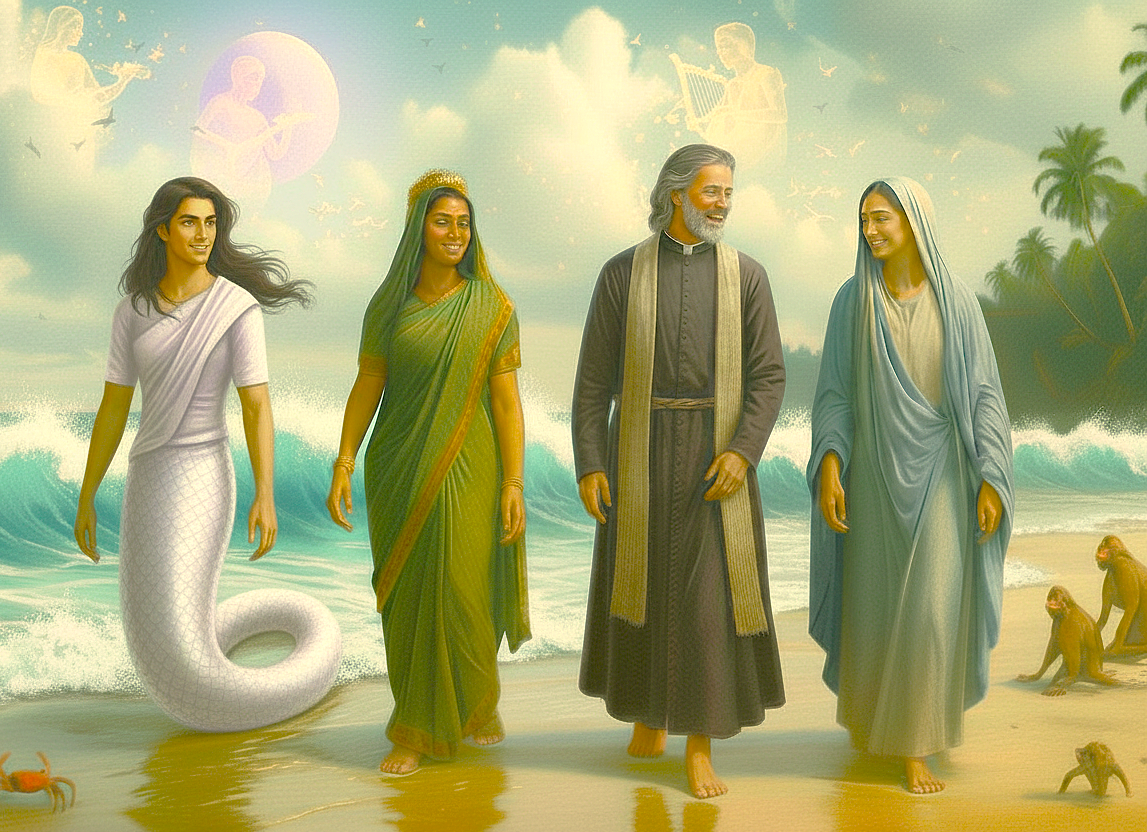
In Old Goa, we see a blend of Hindu and Christian worship. Nagesh, called the "Lord of Serpents," is honored in old temples set within quiet forest groves. The Goddess Santeri is revered as a peaceful figure who brings harmony. Nearby, the presence of St. Francis Xavier is clear, with his remains kept in the Basilica of Bom Jesus. Figures of Mary stand in small white chapels and along many roadsides. These different deities are part of the daily life and landscape of this region. Their places of worship often stand close to one another. This mix reveals the area's long history of cultural exchange and steady belief.
Ancient Technologies: Sacred Sound, Geometry & Astrological Influences
Traditional Indo-Portuguese homes follow principles combining European symmetry with Indian Vastu Shastra. The positioning of courtyards and wells creates natural cooling, while high ceilings and shell windows filter light to maintain peaceful atmospheres. During festivals, the rhythm of ghumots (traditional drums) produces Solefeggio frequencies around 432 Hz, believed to create healing vibrations. The placement of homes along ancient trade routes aligns with celestial markers, creating energy flows that locals say contribute to the region's peaceful mood.
India, Let The Magic Begin - Join Us
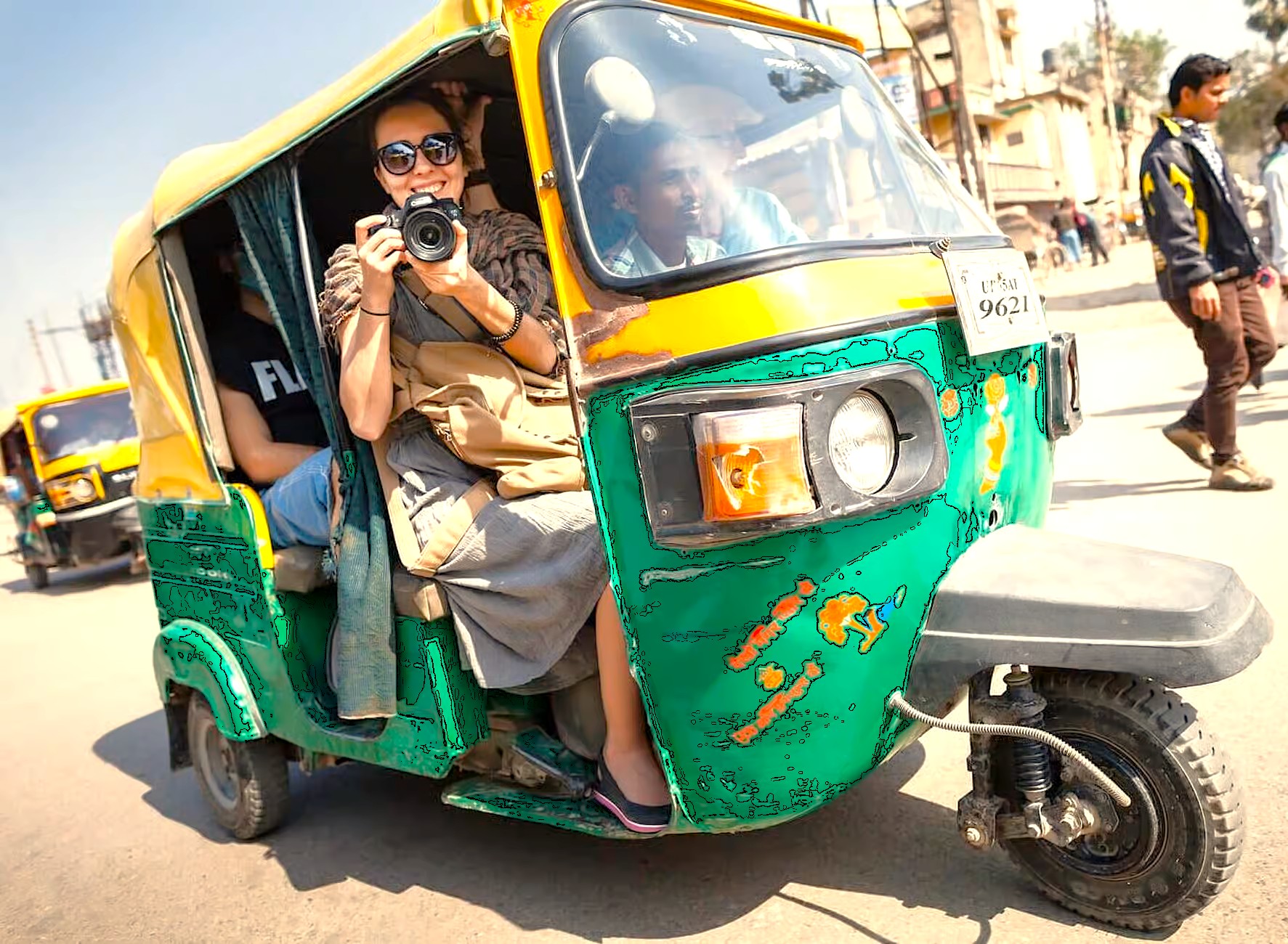
We are exploring Goa, a place revealing a unique fusion of different cultures coming together. Here we find that European influences blend with traditional Indian ways of life. The food we share often tells a story about this history of cultural exchange. It is a location where time seems to follow its own special pace. The local music is a clear example of this blend, combining different styles. We can hear the sounds of both fado and bhajan in the air. This mix of elements is what makes the experience here so distinct. This journey allows us to see how these varied traditions coexist side by side in daily life.
Symphony of Generosity: Offerings from Wanderers to Residents
Through our direct interactions with the community, a beneficial exchange occurs for everyone. When we purchase items from local artisans, our support contributes directly to their livelihoods and the continuation of their craft. In return for our patronage, we receive unique, handmade goods. This process is more than a simple purchase. It becomes a shared experience, built on conversation and mutual respect during the transaction. It is a straightforward, two-way relationship that is beneficial for all involved. This fair exchange ensures that local skills are sustained, and we get to connect with the culture through the items we acquire.